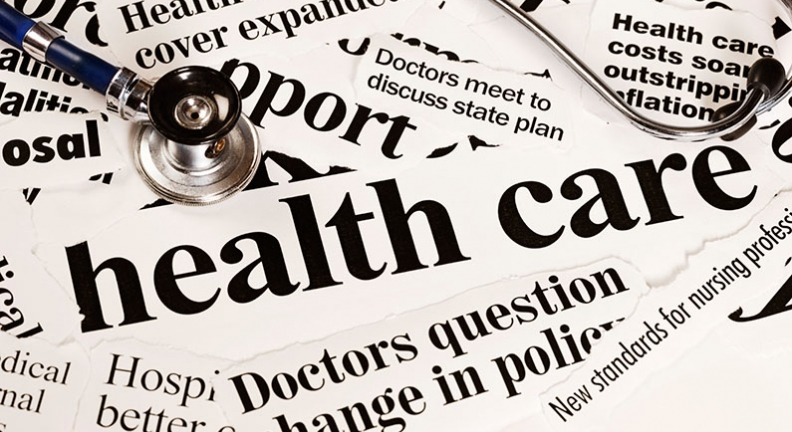HELEN News
Why Is COVID-19 Killing So Many Black Americans?
July 07, 2020
Why Is COVID-19 Killing So Many Black Americans?
The answer, according to researchers, is racism. But the Black community is fighting back.
By Andrea Collier | June 30, 2020COVID-19 threatens the health of Americans in a way that hasn’t happened since the Spanish Flu in 1919. At this writing, it has killed half a million people around the world—a quarter of whom were Americans. The virus brought the economy to its knees, with unemployment rates and business closings that look more like the Great Depression than a mere downturn.
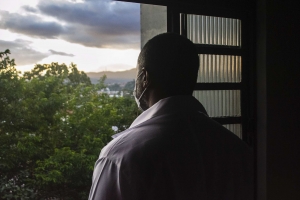
But the suffering inflicted by COVID-19 is not evenly distributed. Black folks (and Latinos) are more likely to contract COVID-19, less likely to be tested and treated, and more likely to die, if they contract the virus. Why? Researchers are identifying many reasons—but most of them come down to a history of racism in the United States.
Researchers say we must not only look at race, but also the disparate conditions that come from living in poverty. They are calling for research that explores social differences in health and the social determinants that play a major role in health outcomes. The data available show that racial disparities in health reveal the lack of health resources for minority and vulnerable communities, including insurance and access to care. But they also point to living conditions, employment, education, and even the impact of the environment. A lack of solid information and even misinformation within communities of color can and has played a role in their response to COVID-19 and guidelines to mitigate the disease.
“The inequities that predate COVID-19 did not suddenly appear, putting this country’s most vulnerable people on the front line,” says Daniel Dawes, J.D., the director of the Satcher Health Leadership Institute and associate professor at the Morehouse School of Medicine, in Atlanta. There are solutions, he and others say—but many of them are bigger than just addressing COVID-19.
How pandemics reveal inequality
In May of this year, a team of researchers at the International Monetary Fund published a paper titled “COVID-19 Will Raise Inequality if Past Pandemics Are a Guide.” They found that five major pandemics of the past two decades—SARS (2003), H1N1 (2009), MERS (2012), Ebola (2014), and Zika (2016)—all raised income inequality in the countries affected, as well as unemployment for those who didn’t have advanced degrees.
That seems to be happening in the United States as case counts rise for COVID-19—and the process is revealing exactly how much American inequality is shaped by racial differences.
The raw disparities are easy enough to document. For example, a national Centers for Disease Control and Prevention (CDC) survey shows that, to date, one-third of hospitalized COVID patients were non-Hispanic Black people, though that group represented only 18 percent of residents in the surveyed communities. Another recent CDC study, published April 29, found that Black people made up 83 percent of COVID-19 hospitalizations in Georgia, a disproportionate level compared with overall hospitalizations. Death rates are higher for Black COVID-19 patients in large urban areas such as New York, Milwaukee, Chicago, Detroit, Los Angeles, and New Orleans. One in ten Americans are Black, but Black people account for one in four of COVID-19 deaths.
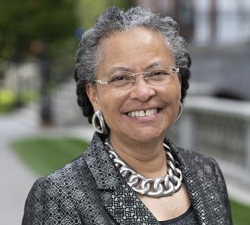 Camara Phyllis Jones, Morehouse School of Medicine © Tony Rinaldo
Camara Phyllis Jones, Morehouse School of Medicine © Tony RinaldoThe root of these disparities, say Morehouse epidemiologist Camara Phyllis Jones, M.D., “is not biological but is the result of the deep-rooted and pervasive impacts of racism.” When she was president of the American Public Health Association in 2016, Jones led a campaign to explicitly name racism as a direct threat to public health, long before COVID-19.
“People of color are more infected because we are more exposed and less protected,” she says. “Once infected, we are more likely to die because we carry a greater burden of chronic diseases from living in disinvested communities with poor food options, poisoned air quality, and because we have less access to health care.”
Dr. Jones says we must also look at the way vulnerable communities live, often in smaller, cramped quarters, or in some cases with no access to water to wash hands often. How, for example, can families quarantine themselves from a member who is a frontline worker, when they are all living in a one-bedroom apartment?
Linda Blount, president and CEO of the Black Women’s Health Imperative, agrees and adds that because of the kinds of jobs that Black women and men work, they are on the front line of exposure to COVID-19. “Many don’t have the option of working from home and waiting out the virus,” Blount says. She says that many are home health aides, warehouse workers, hospital workers, and grocery workers.
“The headlines have shown us that so many Black frontline workers have been left without the personal protective equipment they need when they work in nursing homes, hospitals, and other areas that have high infection rates,” Blount says.
The disparities show in the numbers. Black Americans have 60 percent more diabetes and 40 percent more hypertension than their white counterparts, according to the CDC. “We are living in unhealthier places, without the food choices we need,” says Dr. Jones. She points to no places to exercise safely, toxic dump sites—all of these things go into communities that have been disempowered. “That’s why we have more diseases, not because we don’t want to be healthy,” she says. “We very much want to be healthy. It’s because of the burdens that racism has put on our bodies.”
-
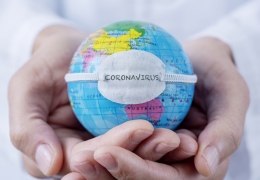
Greater Good’s Guide to Well-Being During Coronavirus
Practices, resources, and articles for individuals, parents, and educators facing COVID-19
Read It Now
She also points to the challenges that Black people have had in even getting a COVID-19 diagnostic test. The majority of testing centers were placed in more affluent neighborhoods. Other challenges—such as not having a car or not having a doctor’s order to get a test—made mitigating the virus in Black communities nearly impossible. By the time symptoms drive people to emergency rooms, it’s too late.
Finally, researchers point to the history of overrepresentation in jails and prisons among Black and Brown people that has also reared its head in infecting them with COVID-19.
According to the NAACP, Black Americans and Latinos make up 32 percent of the U.S. population, but they comprise over half of all incarcerated people. The Marshall Project has been collecting data on the spread of COVID-19 in prisons since March of this year. As of this writing, at least 48,764 people in prison have tested positive for the illness, a five percent increase from the week before. The known infection rate for COVID-19 in jails and prisons is two and a half times higher than in the general population, according to the Equal Justice Initiative.
The role of mistrust and disinformation
Those are not the only reasons why COVID-19 disproportionately affects African Americans.
Dawes also points to an ongoing distrust of the medical system among people of color. “Minority communities are particularly susceptible to falling prey to myths and misinformation,” he says. Early on in the COVID-19 crisis, rapper Waka Flocka pronounced, without any medical evidence, that Black people were immune to the virus. His comments contradicted what medical experts were starting to see in real time. Not only were Black folks contracting COVID-19 in large numbers, but they were having more severe symptoms and higher death rates.
The Black media stepped in to help serve the community’s need to know—fighting battles with people like Waka Flocka within the community while amplifying Black voices for the rest of the world to hear. “We fundamentally don’t trust some of the [non-Black] institutions because they do not serve us well,” said Georges C. Benjamin, executive director of the American Public Health Association, in The Undefeated, a site which explores the intersections of race and sports. “We need to make sure our trusted institutions, clinicians of color, churches, community organizations, are better educated.”
Local media outlets reported on the growing numbers of cases, but also tied the cases to chronic medical conditions that have plagued Black America for years. For a broader audience, they helped connect the dots to working and living conditions and a longstanding access to health care and insurance due to institutionalized racism.
-
_260_180_s_c1.jpg)
Anti-Racist Resources from Greater Good
Stories, tips, and tools to reduce prejudice in society and in ourselves.
Read It Now
And while the medical and public health communities work to stem the impact of COVID-19, Dawes calls for a longer-tail solution, by “shifting our efforts to better address all the upstream factors related to health.”
One of the issues that researchers and health advocates see as a major obstacle to understanding the depth of the problem is a lack of quality data, not just on COVID-19 but on other chronic health conditions and their root causes. During the crisis, hundreds of physicians and public-health experts sent a letter to the Department of Health and Human Services, calling for more data on the numbers of people of color who may not be getting equal testing and treatment for the virus.
Congresswomen Ayanna Pressley (MA), Karen Bass (CA), Robin Kelly (IL), and Barbara Lee (CA-13)—all leaders in the Congressional Black Caucus—joined with Senators Elizabeth Warren (MA), Cory Booker (NJ), Kamala Harris (CA), Edward J. Markey (MA), Jeff Merkley (OR), and more than 85 of their colleagues to introduce the Equitable Data Collection and Disclosure on COVID-19 Act. The bill would require the Department of Health and Human Services to collect and report racial, ethnic, and other demographic data on COVID-19 testing, treatment, and fatality rates, and provide a summary of the final statistics and a report to Congress within 60 days after the end of the public health emergency.
“We have been pushing local and state officials to collect and disaggregate data to show us what’s going on,” says Dawes. Without that kind of data, “there will be the same track record on addressing health equity and the systematic social determinants of health as there [was] before.” For example, data from the CDC’s Morbidity and Mortality Weekly Report on COVID-19 showed that patients in metro Atlanta hospitals had a higher rate of hospitalization if they were Black, male, obese, living with diabetes, and without insurance. Insights like that one help to target public-health education as well as treatment.
But researchers know that more needs to be done if the data is going to work to bring about solutions and bridge the gaps.
Moving forward with data and solutions
Dawes and a cohort of researchers will tackle health disparities in a major research project. The initiative—the National Infrastructure for Mitigating the Impact of COVID-19 within Racial and Ethnic Minority Communities (NIMIC)—is a three-year project designed to work with community-based organizations across the nation to deliver education and information on resources to help fight the pandemic. The information network will strengthen efforts to link communities to COVID-19 testing, health care, and social services and to best share and implement effective response, recovery, and resilience strategies.
The initiative, which will be housed at Morehouse School of Medicine, was awarded a new $40 million grant to fight COVID-19 in racial and ethnic minority, rural, and socially vulnerable communities by the U.S. Department of Health and Human Services and Morehouse’s Office of Minority Health.
The Morehouse School of Medicine was selected to participate in a cooperative agreement with the Office of Minority Health “to lead the initiative to coordinate a strategic network of national, state, territorial, tribal, and local organizations to deliver COVID-19-related information to communities hardest hit by the pandemic,” according to the agency.
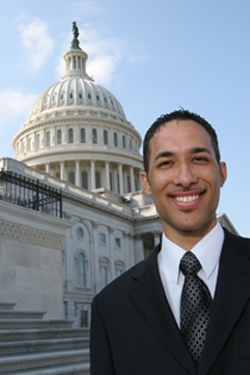 Daniel Dawes, director of the Satcher Health Leadership Institute
Daniel Dawes, director of the Satcher Health Leadership InstituteIn addition, Google has given a $1 million grant to Morehouse School of Medicine’s Satcher Health Leadership Institute to collect and analyze data to explore why communities of color have had higher diagnoses of COVID-19. According to Dawes, a team of Google engineers and data scientists will work full-time over the next six months to support the project. “This work will help policymakers better understand how to ensure those communities receive the targeted help that they need to close those racial gaps and ensure the communities receive the resources and support that they need to battle the virus,” he says.
Dawes says the new work will give a deeper insight into the social determinants of health for Black Americans, include working conditions, unemployment and underemployment, access to clean water, affordable housing, transportation, and quality health care even beyond COVID-19.
In the end, however, health disparities are fundamentally a political problem—meaning that they are the result of an inequality of power between Black and white America. While not everyone is willing to admit that’s the case, there are some rays of hope. In at least one part of the country, the public appears to understand that not everyone is affected equally by COVID-19—and that the pandemic could worsen inequality.
According to poll results released by UC Berkeley’s Institute of Governmental Studies, a majority of Californians say that the COVID-19 pandemic is increasing inequality in the United States, and a majority believe that Black California residents are more severely affected by COVID-19. The Berkeley poll of 8,800 registered California voters was conducted online, in English and Spanish, between April 16 and April 20, in conjunction with the UC-based California Institute of Health Equity and Action. It is one of the first U.S. efforts to take a deep look at public opinion on the COVID-19 pandemic and its impact.
In all, nearly 70 percent of the poll respondents agree that inequality has grown worse since the pandemic emerged in January. But beneath that agreement are substantial divides, with Republicans, rural Californians, and those with lower levels of education less likely to believe that inequality is deepening, the pollsters found.
“The structural barriers and resulting inequities are not permanent,” says Dawes. But he points to the role that politics has and continues to play moving forward. If health disparities are the result of a power imbalance, as so many researchers argue, then the Black community needs more bold voices who are willing to speak on the truths of inequity at least as much as it needs doctors.

